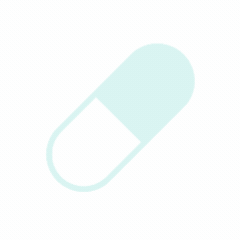Drug updated on 12/11/2024
| Dosage Form | Tablet (oral; 75 mg) |
| Drug Class | Beta-3 adrenergic agonists |
| Ongoing and Completed Studies | ClinicalTrials.gov |
Indication
- Indicated for the treatment of overactive bladder (OAB) with symptoms of urge urinary incontinence, urgency, and urinary frequency in adults.
Latest News

Summary
- This summary is based on the review of five systematic review(s)/meta-analysis(es). [1-5]
- Vibegron (75 mg) demonstrated a significantly greater reduction in total urinary incontinence episodes compared to mirabegron (50 mg) and tolterodine (4 mg extended release), with pooled analysis confirming significant improvements in daily micturitions, urgency episodes, and incontinence episodes compared to placebo.
- Vibegron showed significantly greater improvement in volume voided per micturition compared to mirabegron and tolterodine across various time points, with meta-analysis favoring vibegron over antimuscarinic drugs in this outcome.
- Solifenacin (10 mg) was more effective in reducing mean daily micturitions and incontinence episodes, while vibegron was particularly effective in improving volume voided per micturition.
- Vibegron demonstrated better tolerance for dry mouth and treatment-emergent adverse events (TEAEs) compared to antimuscarinic monotherapy. Serious adverse events (SAEs) and discontinuations due to adverse events showed no significant differences between vibegron and antimuscarinic therapies.
- The most common adverse events for vibegron and other beta-3 adrenergic agonists included hypertension (8.8-9.2%), urinary tract infections (5.9-6.6%), headache (5.5%), and nasopharyngitis (4.8-5.2%). Hypertension was noted as the most frequently occurring adverse event in long-term trials for vibegron, mirabegron, and tolterodine.
- The studies involved patients with overactive bladder (OAB), but no specific subgroups based on demographic factors such as age, gender, or comorbid conditions were identified. The findings, therefore, apply broadly to OAB patients, with vibegron showing a favorable safety and efficacy profile compared to other medications, such as antimuscarinics, across this general population.
Product Monograph / Prescribing Information
| Document Title | Year | Source |
|---|---|---|
| Gemtesa (vibegron) Prescribing Information. | 2023 | Urovant Sciences Inc., Irvine, CA |

